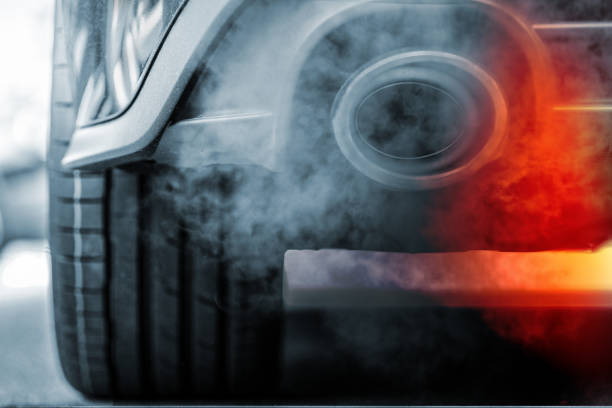The Hidden Potential of Waste Heat Recovery in Automobiles
Imagine a world where the scorching heat from your car's exhaust isn't just wasted energy, but a valuable resource powering your vehicle's electrical systems. This isn't science fiction; it's the promising reality of automotive waste heat recovery systems. As we dive into this cutting-edge technology, we'll explore how it's reshaping the future of fuel efficiency and environmental sustainability in the automotive industry.

The concept of waste heat recovery isn’t entirely new, having been used in industrial settings for decades. However, its application in the automotive sector is a recent development, spurred by the increasing demand for more fuel-efficient and environmentally friendly vehicles. The technology behind these systems is based on the thermoelectric effect, which allows for the direct conversion of temperature differences into electricity.
The Thermoelectric Magic
At the heart of automotive waste heat recovery systems are thermoelectric generators (TEGs). These solid-state devices consist of semiconducting materials that produce electricity when subjected to a temperature gradient. In the context of vehicles, TEGs are positioned to take advantage of the temperature difference between the hot exhaust gases and the cooler ambient air.
As the hot exhaust gases flow through one side of the TEG, and cooler air passes over the other, the temperature difference creates an electrical potential. This phenomenon, known as the Seebeck effect, allows the TEG to generate electricity without any moving parts, making it a reliable and low-maintenance solution for energy recovery.
Integration and Implementation Challenges
While the concept of waste heat recovery in automobiles is promising, its implementation comes with several challenges. One of the primary hurdles is the integration of TEGs into existing vehicle designs without compromising performance or adding significant weight. Engineers must carefully consider factors such as thermal management, packaging constraints, and the overall impact on vehicle dynamics.
Another challenge lies in the efficiency of current thermoelectric materials. While advancements have been made, the conversion efficiency of TEGs remains relatively low compared to other energy generation methods. This means that a significant amount of research and development is still needed to improve the performance and cost-effectiveness of these systems.
Beyond Thermoelectrics: Alternative Approaches
While thermoelectric generators are at the forefront of automotive waste heat recovery, other technologies are also being explored. One such alternative is the Rankine cycle system, which uses the heat from exhaust gases to vaporize a working fluid. This vapor then drives a turbine connected to a generator, producing electricity.
Another innovative approach involves the use of phase-change materials (PCMs) to store and release thermal energy. These materials can absorb large amounts of heat as they change from solid to liquid, and release it as they solidify. By strategically placing PCMs throughout the vehicle, engineers can create a thermal management system that not only recovers waste heat but also helps regulate the temperature of various components.
The Road Ahead: Future Prospects and Potential Impact
As research in waste heat recovery technologies continues to advance, we can expect to see significant improvements in both efficiency and cost-effectiveness. Some experts predict that future waste heat recovery systems could generate enough electricity to power all of a vehicle’s auxiliary systems, from air conditioning to infotainment, potentially reducing fuel consumption by up to 5%.
Moreover, the integration of waste heat recovery systems with other emerging technologies, such as advanced battery systems and intelligent power management, could lead to even greater gains in overall vehicle efficiency. This synergy between different technologies holds the potential to revolutionize the automotive industry, paving the way for a new generation of ultra-efficient vehicles.
The impact of widespread adoption of waste heat recovery systems in automobiles could be substantial. Not only would it contribute to reduced fuel consumption and lower emissions, but it could also help automakers meet increasingly stringent environmental regulations without sacrificing performance or comfort.
As we look to the future of automotive technology, waste heat recovery stands out as a promising solution to some of the industry’s most pressing challenges. By turning wasted energy into a valuable resource, these systems represent a significant step towards a more sustainable and efficient automotive landscape. The road ahead may be long, but the potential rewards make it a journey worth taking.





